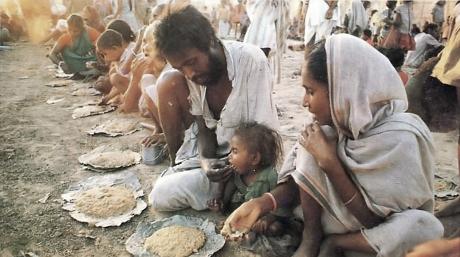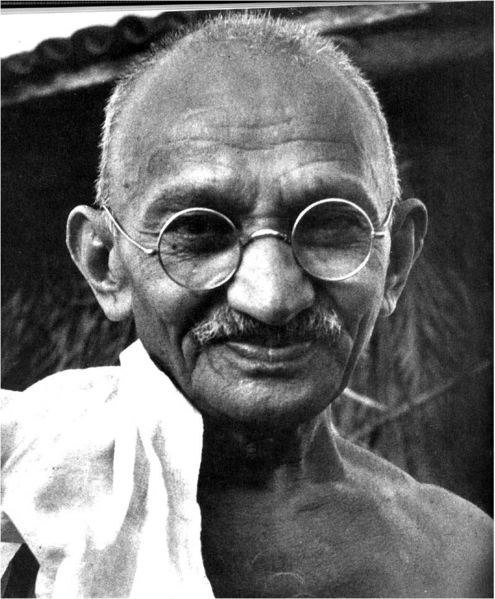 | Asian Culture discovering India! Today we will be discovering India!
India's capital is New Delhi. |
Untouchables
 | The untouchables are the lowest ranking citizens in the traditional Indian caste system. They are considered unclean, polluted people who enjoy little to no rights in society. If any higher class citizens come into contact with an untouchable, in some extreme cases even an untouchable’s shadow, they must clean themselves thoroughly. The untouchable may be beaten or even killed due to this. (3). Untouchables work the dirty, polluted jobs such as any job that involves ending a life, coming into contact with human emissions or meat, and collecting garbage. (8). The Indian caste system has remained one of the world’s most segregated public systems. (3). |
Shah Jahan
Shah Jahan was a Mughal (Muslim ruler) of India. He was 35 years of age when he ascended to the throne in the year of 1628. The name Shah Jahan translates into “King of the World” and Shah Jahan is best known for his inspiration to build the Taj Mahal, a mausoleum for his deceased wife, Mumtaz Mahal. His reign lasted for 30 years before sickness took ahold of him. Seeing their opportunity arise his sons became hostile towards one another and his son Aurangzeb proved his dominance. Shah Jahan was then imprisoned by his son for eight years before his actual death in the year 1666, his eyes fixed on the Taj Mahal from his deathbed where he was then buried. (9).
|  |
Taj Mahal
 | The Taj Mahal, located in Agra, India, is considered to be one of the Eight Wonders of the World. It is an entirely white marble mausoleum built by the Indian ruler Shah Jahan as a momentum to his late wife, Mumtaz Mahal. Taj Mahal translates into “crown palace” which is exactly what this temple embodies. Twenty-two years and 32 million rupees (roughly $582,771 modern American dollars) went into the beauty of the Taj Mahal. The inside is decorated with inlaid floral designs and elegant calligraphy using enriched and precious gems. (13). The upper half of the walls are embellished with script from the Qur'an. (7). |
British Imperialism
The art of imperialism is when a strong country dominates a weaker one. British imperialism is one of the strongest examples of this. Having far more advanced technologies made it a simple conquest for Britain to dominate India, their “crowned jewel,” in the mid 1880’s. India had the resources that Britain yearned for and was a prime target. The Indian people were not united in any way across the country and diversities abounded. This made Britain’s mission even easier; they paid off local princes or simply used weapon force. (1). Britain’s main goal was to unite all of India under one common language: English. They also brought European principles to India such as human rights and freedom of speech. All these aspects lead to nationalism in India, a sense of unity, which eventually lead to the downfall of British imperialism in India. Many violent and nonviolent protests, such as Gandhi’s impact, resulted in India’s independence in 1947. (12). Britain left some positive impacts on India before their decline such as permanent roadways, railways, and the beginning of a postal system. (1).
|  |
Gandhi
 | Gandhi, also commonly known by Mahatma Gandhi, was an anti-war activist who fought for the independence of India from British imperialism, the country in which he was born (1869). He studied law in London, England and went on to spend 20 years fighting Indian discrimination in South Africa. Gandhi returned back to his home country of India in the year of 1915 to lead peaceful forms of civil disobedience. He fought specifically for a release in India from poverty, female and caste discrimination, and a self-ruling India. When Gandhi was imprisoned for conspiracy from the year 1922 to 1924 he willingly starved himself for what he believe in. After India gained its independence in the year 1947 Gandhi turned his attention to the Hindu-Muslim conflict. (5). On January 30th, 1948 Mahatma Gandhi was assassinated by a Hindu-extremist, Nathuram Godse, who was hanged for his crime against humanity. His brother, Gopal Godse, was sentence to life for his part in the conspiracy. TIME Magazine released an interview with Gopal where they asked him why they wanted to kill Gandhi. His reply was, “Gandhi was a hypocrite. Even after the massacre of the Hindus by the Muslims, he was happy. The more the massacres of the Hindus, the taller his flag of secularism.” (11). Even after his death Mahatma Gandhi has remained an inspiration who has inspired other peaceful activists such as Martin Luther King Jr. (5).
|
Buddhism
Buddhism dates back 2,500 year ago to the lifetime of Siddhartha Gautama, a royalty born who, at the age of 29, decided that luxury and wealth was not the road to meaning and happiness. He gave up everything, money, power, a wife, a child, and spent six years learning about the religions and philosophies of the time on his search for true happiness. When Siddhartha, 35 years of age, became enlightened he was newly known as Buddha (budhi means “to awaken”) and dedicated the rest of his life to teaching the ways of Buddhism. In modern times Buddhism has around 300 million followers and is becoming even more popular in western civilization. The strong appeal comes from the answers that Buddhism supplies about being happy in the materialistic world and the understanding of the human mind that it represents. Buddhism is also tolerant of all other religions which is enticing to generations that are slowly but surely becoming more tolerant. Buddhism is a philosophy, a way of life that teaches that one can overcome life’s inevitable sufferings through consciousness and wisdom. (1).
|  |
Hinduism
 | Hinduism is the number one religion in India with 80% of the population honoring it. Worldwide there are roughly 900 million Hindus. Hinduism is one of the world’s oldest religions and has a vast array of practices and beliefs. This makes it hard to define hinduism as a single belief and makes it more of a way of life. There is no one founder and there are many texts but the main Hindu text would be the Vedas. These are the oldest texts the religion has and defines what is truth. For thousands of years they were passed down by mouth. Hinduism believes in the idea of reincarnation, living multiple lives, one after the other. The way you live your life effects what form you will come back as in your next because of Karma. Worship is mostly personally done in one’s home because personal offerings are made. Many Hindu homes have their own shrine to which offerings of fruit, incense, water, and flowers are given along with the repetition of mantras to a favorite god or goddess. Rituals are generally performed three times a day. The main goal of most Hindus is to go on a pilgrimage. There are many sites to pilgrimage to in India including rivers, mountaintops, and temples but the Ganges River is one of the most popular, holiest rivers. (4).
|
Tamil Tigers
The Tamil Tigers were a terrorist group that is renowned for their brutality and organization skills. (6). They are credited with inventing the suicide vest and were know for carrying cyanide capsules as pendants around their necks incase they were taken into custody. (6, 10). They had been at war on and off with the Sri Lankan government for over 20 years, starting when Buddhism was declared the official religion of the country. The Tamil people, whom originated from India (whose coast is a mere 20 miles away) honor Hinduism as their religion. The Tamil Tigers fought for independence from Sri Lanka and often financed themselves through bank robberies and drug smuggling. (6). The group was founded by Velupillai Prabhakaran who also maintained the role of leader until his death in May 18th, 2009 at the age of 54. He was shot to death in an early morning ambush, along with 18 of his lieutenants. This represented the concede of the Tamil Tigers. (10).
|  |
Bibliography
Information 1) "A Basic Buddhism Guide: 5 Minute Introduction." A Basic Buddhism Guide. N.p., n.d. Web. 06 Apr. 2013. <http://www.buddhanet.net/e-learning/5minbud.htm>. 2) "British Imperialism in India and China." English Imperialism Colonialism. N.p., n.d. Web. 06 Apr. 2013. <http://www.123helpme.com/preview.asp?id=71195>. 3) Daniel, Aharon. "Untouchables of India." Adaniel's Info Site. N.p., n.d. Web. 06 Apr. 2013.
<http://adaniel.tripod.com/untouchables.htm>. 4) "Hinduism." BBC News. BBC, n.d. Web. 06 Apr. 2013. <http://www.bbc.co.uk/religion/religions/hinduism/>. 5) "Mahatma Gandhi Biography." Bio.com. A&E Networks Television, n.d. Web. 06 Apr. 2013. <http://www.biography.com/people/mahatma-gandhi- 9305898>. 6) Pickert, Kate. "The Tamil Tigers." Time. N.p., 4 Jan. 2009. Web. 5 Apr. 2013. <http://www.time.com/time/world/article/0,8599, 1869501 ,00.html>. 7) Simon, Reeva S. "Taj Mahal." The Middle East: History, Culture, Geography. New York: Globe Book, 1987. 125. Print. 8) Staisil. "What Kind of Jobs Did the Untouchables in the Ancient India Do?" Yahoo! Answers. Yahoo!, n.d. Web. 6 Apr. 2013.
<http://answers.yahoo.com/question/indexqid=20100 22714 0824 AATk4op 9) "The Reign of Shah Jahan, 1628-1658." Islamic Art. N.p., n.d. Web. 06 Apr. 2013. <http://www.islamicart.com/library/empires/india/shah jah an.ht ml>. 10) Thottam, Jyoti. "Prabhakaran: The Life and Death of a Tiger." Time. N.p., 19 May 2009. Web. 5 Apr. 2013. <http://www.time.com/time/world/article/0,8599,1899590,00 .html>. 11) "Why Gandhi Was Assassinated?" InstaBlog Community Viewpoint. N.p., 15 Apr. 2009. Web. 06 Apr. 2013. <http://www.instablogs.com/why-gandhi-was-assassinated .html>. 12) Wright, Cierra. "British Imperialism in India." ISS World History. N.p., 17 Apr. 2011. Web. 06 Apr. 2013. <http://issworldhistory.forumotion.net/t1529-british-imperiali sm-in-india>. 13) Zahoor, A. "Taj Mahal, Agra, India." Islamic City. N.p., n.d. Web. 6 Apr. 2013. <http://www.islamicity.com/culture/taj/ AspxAuto DetectCookie Support=1>.
| Images 1) http://homepages.rootsweb.ancestry.com/~poyntz/India/images/ Presidencies1893.jpg 2) http://back2godhead.com/wpcontent/uploads/2013/01/125_197 7_12-07-10.jpg 3) http://rajivawijesinha.files.wordpress.com/2010/08/shah_jahan_ and _m umtaz_mahal.jpg 4) http://upload.wikimedia.org/wikipedia/commons/9/94/Taj_maha l_aga_india_1906_3d.jpg 5) http://digitaldocsinabox.org/images/Imperialism/BritishEmpire. jpg 6) http://gandhifoundation.files.wordpress.com/2008/12/1948_mkg andhi.jpg 7) http://server13.klub.co.in/dharmik/69619-download-religious-wallpapers-buddhism-backgrounds-wallpaperbackgrounds-Picture-picstopin-1920x1200.jpg 8) http://d4nations.com/webpubl/images/1slide_274396_1981500 _free.jpg 9) http://www.thewire.org.au/StoryImages/Tamil-Tigress.jpg |